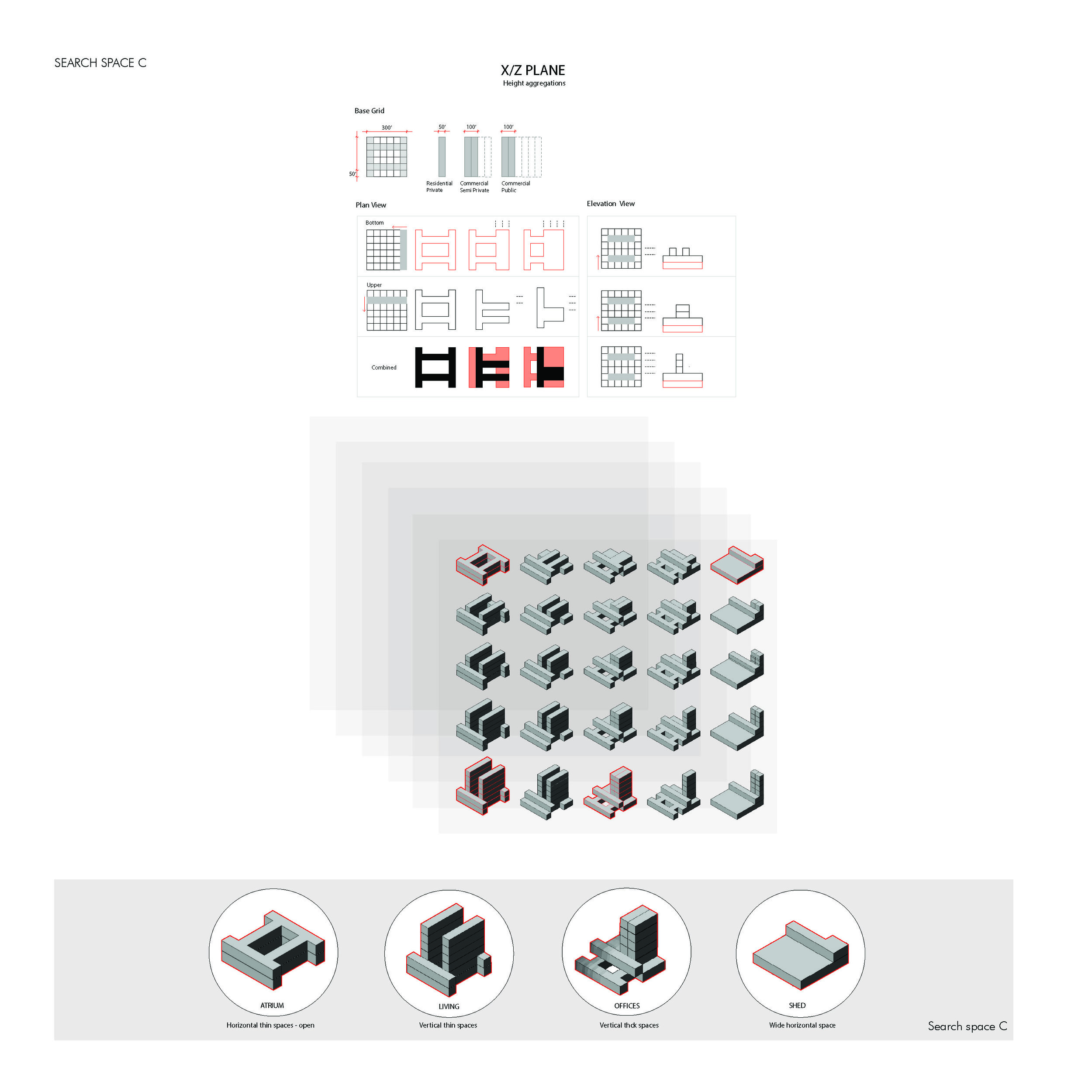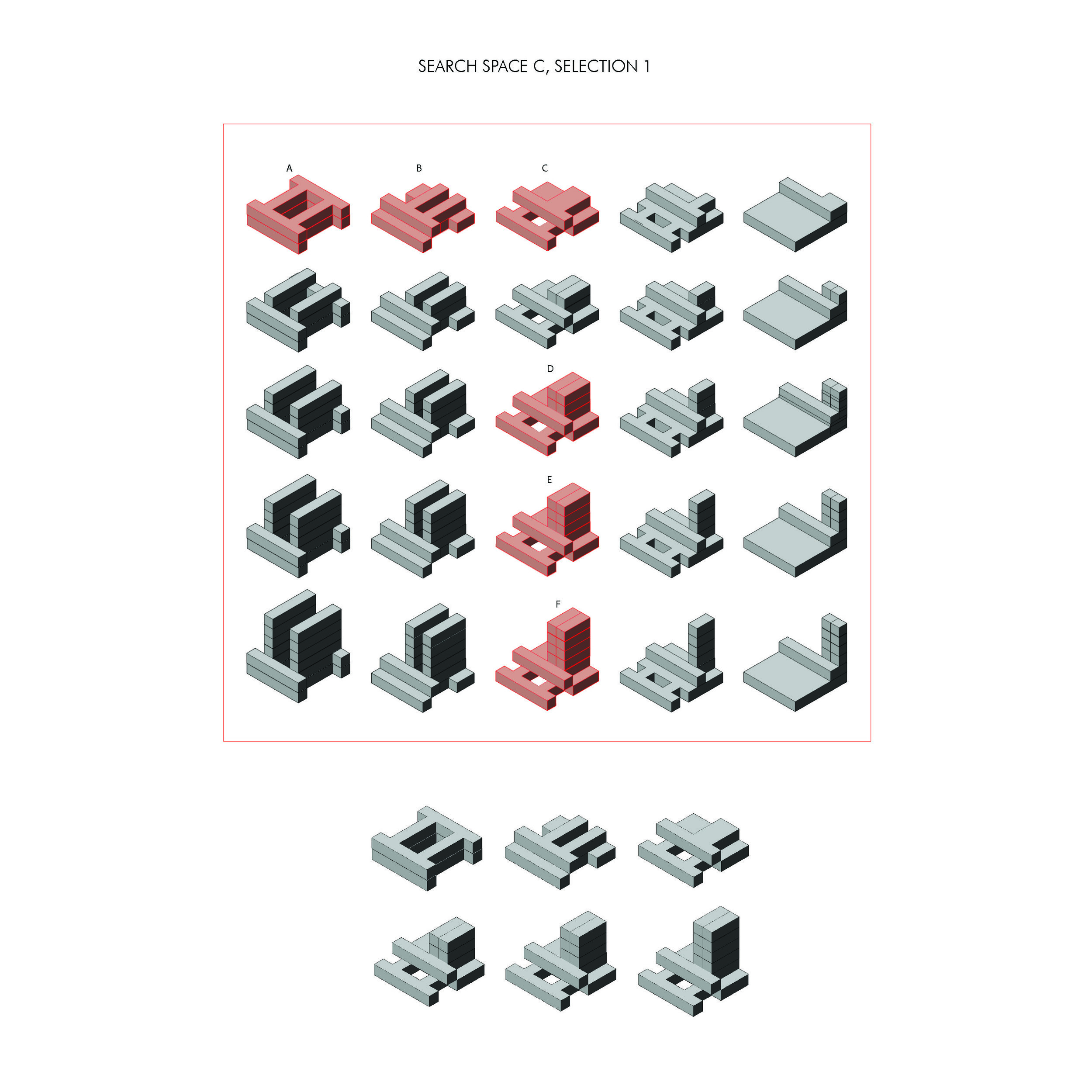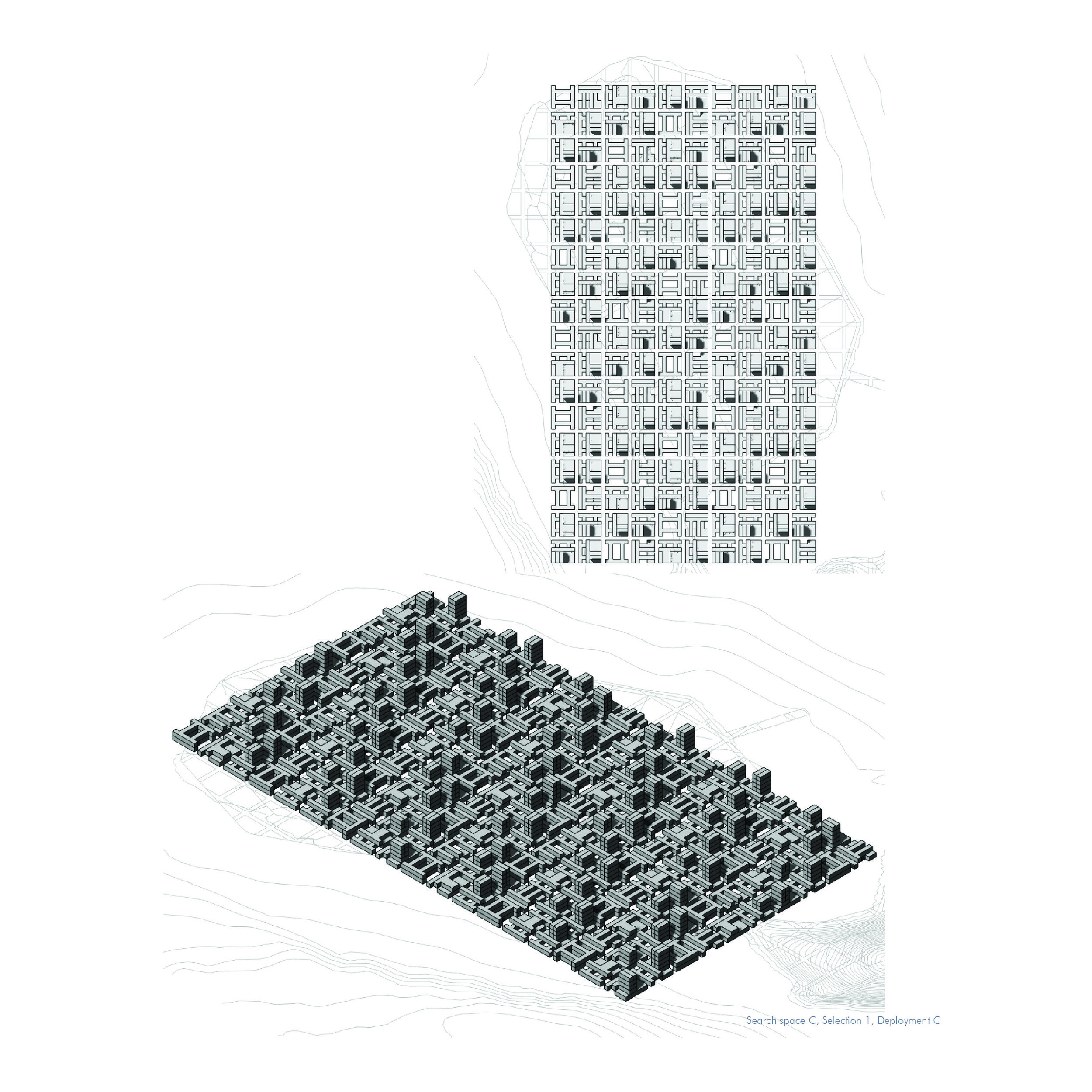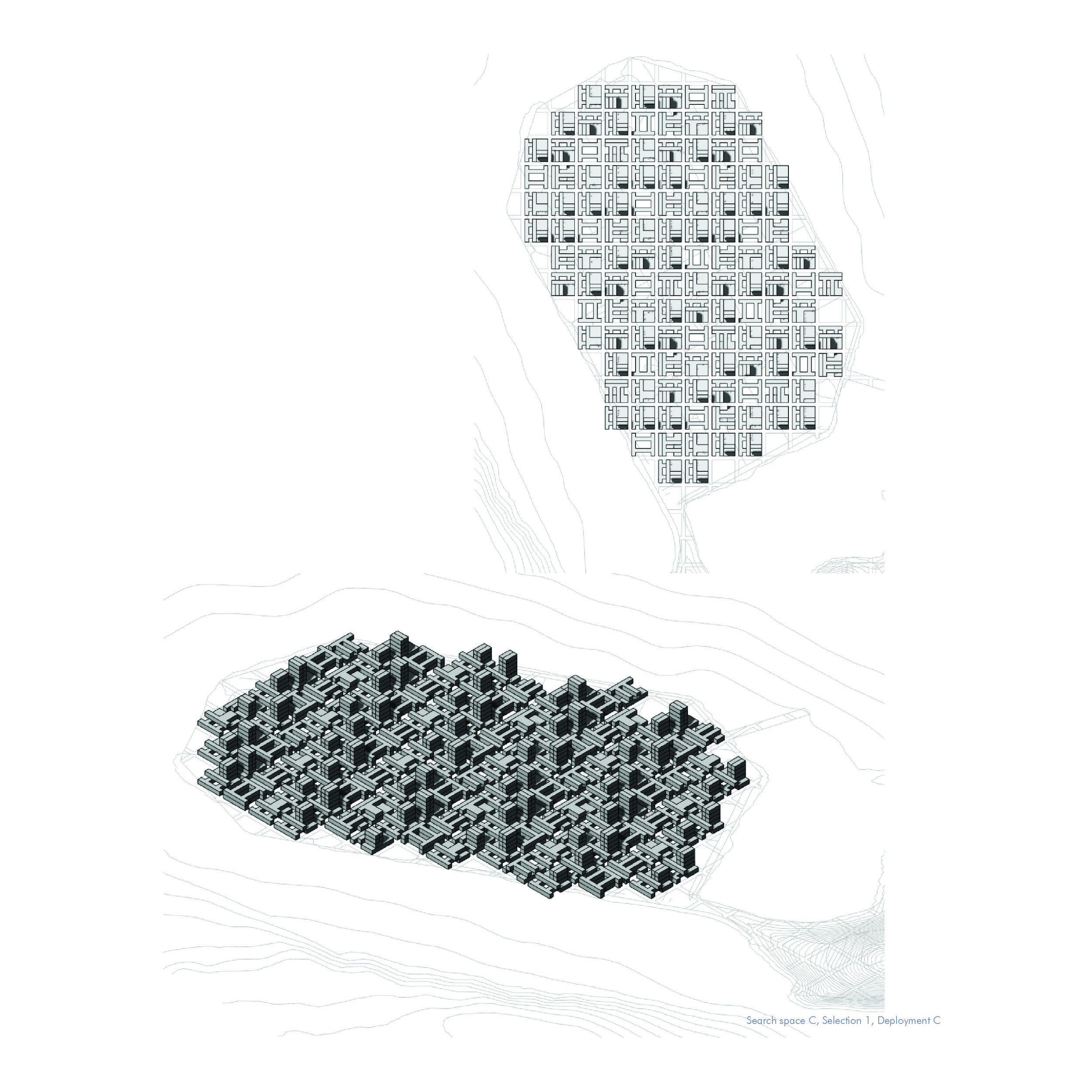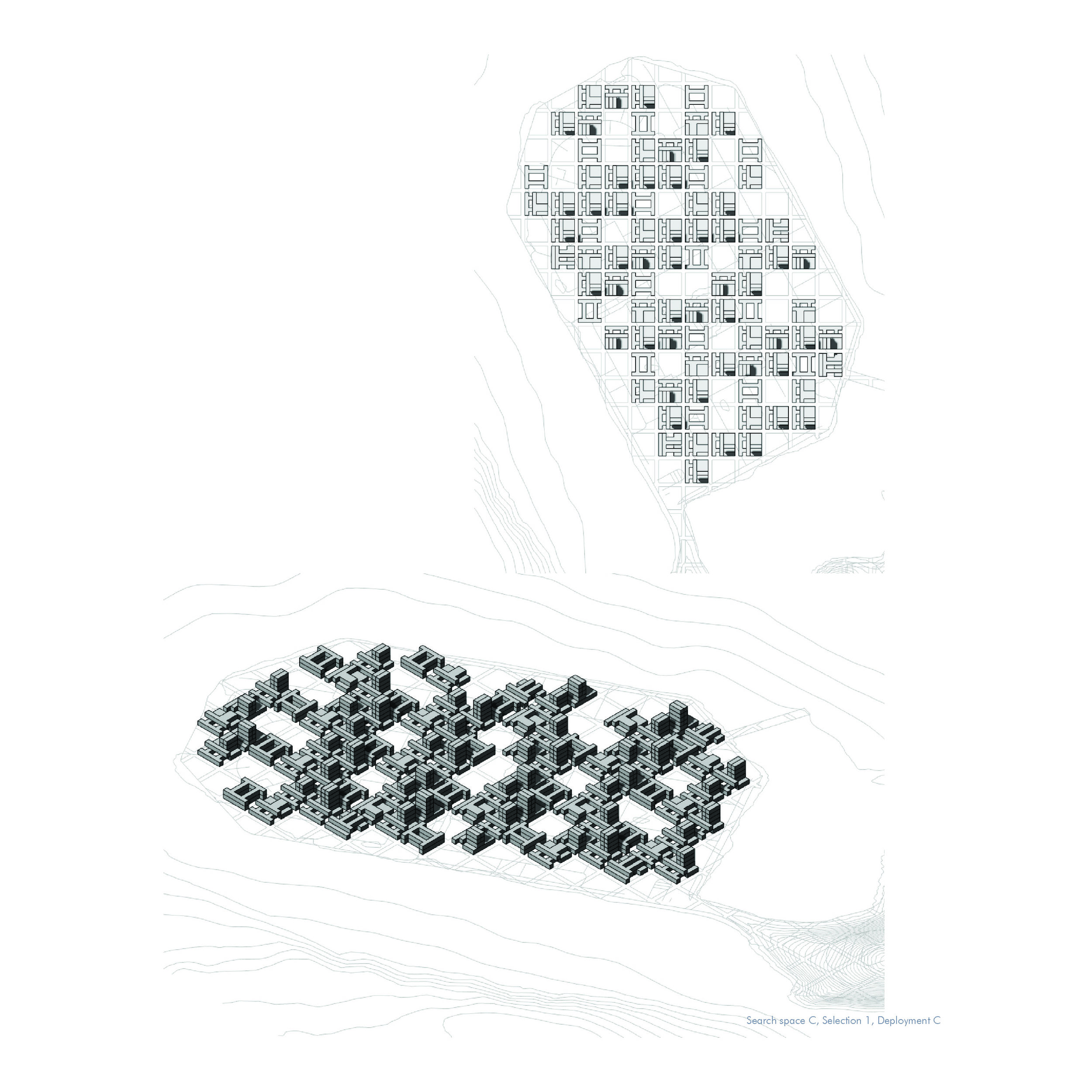ALBERT POPE WORKSHOP
Project: Albert Pope runs a workshop on Search Space
Class: Workshop, California College of the Arts, Architecture Division
Date: Summer 2017
Holism is, very simply, a theory of form wherein a whole exceeds the sum of its constituent parts. Also known as synergy,” architecture and urbanism have been defined by holistic principles for centuries. A city, for example, must be more than a random or arbitrary field of buildings in order for it to exist as a singular entity. A street, a district or a city do not come into existence until the individual buildings that make them up exceed their status as individual parts. Traditionally, synergies have been secured through the protocols of urban aggregation including a centralized hierarchy, regular block and street patterns as well as a robust set of urban types. In the second half of the twentieth century, almost every one of these protocols were suspended, largely through an entropic dissipation of traditional urban densities. After 1950, centralized hierarchies gave way to polynuclear development (otherwise known as Megalopolis), regular block and street patterns gave way to randomly distributed spine formations (otherwise known as Sprawl), and a robust set of urban types gave way to buildings of indiscriminate configuration and size with zero accommodation of any larger, legible whole. The question is not whether Megalopolis is a good city or a bad city, the question is if it is a city at all.
Thirty years ago, it was correctly deduced that there is great economic, political and cultural value in that surplus which exceeds the simple sum of the parts and that holistic traditions must be recovered and the surplus claimed. In a damning critique of contemporary urbanism, La Tendenza in Europe and, somewhat later, New Urbanism in the United States, argued that the absence of a legible unity called The City was culturally and politically regressive. While the atomization of physical form might be economically sound, it crippled the emergence of new forms of social and political unity both in the present and into the future. In the belief that collective life demands a material manifestation, la Tendenza and New Urbanism attempted to revive the traditional protocols of urban aggregation centralized hierarchy, regular block and street patterns and the use of typical form. Well intended as they were (and are), however, these efforts failed, largely because the economic structures under which we operate today cannot be simply be stuffed into traditional urban templates. The economic structures that built out Brooklyn, for example, have little to do with the economic structures that enable mass consumerism today. (One can try to make a copy of Brooklyn in the middle of an exurban parking lot, but its realization will lose everything that made it desirable in the first place.) Inasmuch as the job of politics and of culture is to sublimate the economic substructure that brings them into existence, the strict revival of traditional urban forms will always miss the mark. This failure to revive traditional holistic practices does not, however, negate the need for holistic effects. Now more than ever, the economic, political and cultural surplus produced by synergistic effects are indispensable with regards to our seemingly intractable social and environmental problems.
As a result, the coffee day workshop will focus on updating our conception of the urban whole in an attempt to culturally sublimate contemporary urban production and accrue synergistic effects. Specifically, we will work on updating one of the traditional protocols of urban aggregation: building typology. Instead of pursuing a fixed number of essential type forms, the exercise will attempt to generate and deploy a relatively large set of complementary forms that capable of satisfying a large number of contemporary urban problems that and also capable of combining into a greater whole. This set will be called a Search Space, which will be explained In full at the first class mind. The outcome of weeks work will be to design the massing envelopes of a new city” for Treasure Island in San Francisco Bay, a project presently being developed by SOM. Due to submerge as early as 2035 an early victim of sea level rise Treasure Island redevelopment will function as the test case for an urbanism that is responsive to the scientific facts of the climate crisis. This crisis is seen as the catalyst for the emergence of new holistic protocols that are capable of sublimating an economic system that is presently driving us over the cliff.
This workshop is part of the 333 Studio New Investigations in Collective Form organized and co-taught by Assistant Professor Neeraj Bhatia.
About the workshop series:
In 1964, Fumihiko Makia influential text Investigations in Collective Form elucidated three approaches to collective form compositional, mega-structure, and group form. In opposition to the lack of coherence, elasticity, and flexibility in the city, Maki attempted to create a theory that expanded beyond the singular building, inciting a discussion on Collective Form. For Maki, Collective Form is the relationship between buildings that cause them to be together. The term collective of course, also refers to a group or constituency with a shared interest. This common objective is at the core of politics.
This year 333 Studio will focus on the relationship between Politics and Urban Form. By politics we mean the relationships and goals that bind and separate us. By Urban Form we are referring to the organization of the city, its morphologies, infrastructures, and typologies. Lead by three influential urban thinkers and designers Albert Pope (Rice University), Peggy Deamer (Yale University), and Rafi Segal (MIT) whose design-research focuses on alternative urban organizations in neo-liberal capitalism, that embed collective power within urban form, 333 will consider what makes the city more than a grouping of buildings and the public more than a grouping of individuals by developing and expanding the approaches to Collective Form.
Albert Pope is the Gus Sessions Wortham Professor of Architecture at Rice University School of Architecture. He teaches in the school’s Undergraduate and Graduate Program and is currently the director of the school Present/Future program. Professor Pope holds degrees from SCI-Arc and Princeton, and taught at Yale University and SCI-Arc before coming to Rice. His design work has received numerous awards including national and regional awards by the American Institute of Architects as well as a design citation from Progressive Architecture. He is the recipient of numerous grants from a wide variety of funding agencies including the National Endowment for the Arts and the Shell Center for Sustainability. He is the author of the book-length study of the postwar American City, Ladders, recently reissued in a second edition (Princeton Architectural Press, 1997, 2015). Professor Pope has written and lectured extensively on the broad implications of post-war urban development. His current research addresses the urban implications of climate change. He is actively working on the formulation of new models of density in light of the extraordinary demands soon to be placed on the global urban environment.


